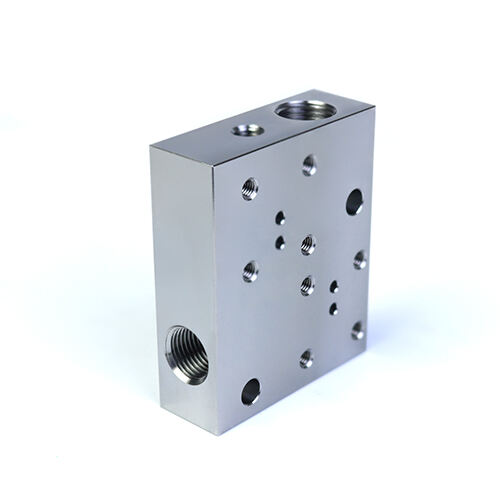CNC 정밀 부품이 일반적인 제조 방식에서 우수한 제품 생산으로의 전환을 주도하다
글로벌 제조업 근본적인 변화를 겪고 있습니다. 바로 일반적이고 대량 생산된 부품에서 고성능의 특정 용도 맞춤형 부품으로의 전환입니다. 2025년에는 전기자동차에서 의료기기까지 다양한 산업 분야에서 보다 높은 정밀도, 소재 효율성 및 기능적 완성도를 요구하고 있습니다. 기존 제조 방식은 이러한 요구사항을 충족시키기 위한 정확성과 유연성이 종종 부족합니다. 정밀 CNC 가공 이 전환 과정에서 핵심 기술로 부상하여 복잡하고 고정밀 부품 생산이 가능해졌으며, 이는 우수한 성능과 신뢰성을 제공합니다.

연구 방법
1. 설계 접근법
기존 가공 부품과 고정밀 CNC 시스템 을 사용해 제작된 부품 간 비교 분석을 수행했습니다. 연구는 알루미늄 합금, 티타늄 및 엔지니어링 플라스틱으로 제작된 임펠러, 구조 브래킷 및 정형외과 임플란트와 같은 복잡한 구성 부품에 초점을 맞췄습니다.
2. 데이터 출처 및 도구
차원 및 기하학적 측정은 Zeiss CONTURA CMM 및 GOM ATOS 광학 스캐너를 사용하여 수행되었습니다. 표면 무결성은 Bruker 백색광 간섭계로 평가되었습니다. 기계 데이터는 CNC 컨트롤러(Siemens 840D, Fanuc) 및 IoT 기반 모니터링 시스템에서 기록되었습니다. 모든 시험은 재현성을 보장하기 위해 ISO 9001 품질 프로토콜을 따랐습니다.
결과 및 분석
1. 향상된 차원 정확도
CNC 정밀 가공은 핵심 특성에 대해 ±5 µm 이내의 공차를 유지하여, 기존 가공의 ±20 µm 대비 우수한 정밀도를 보였습니다.
2. 표면 및 기능 품질 개선
정밀 가공 부품의 표면 거칠기 값은 평균 Ra 0.4 µm로 감소하여 마찰이 줄어들고 피로 수명이 향상되었습니다.
3. 생산 유연성 및 속도
멀티축 CNC 가공은 여러 공정을 단일 세팅으로 통합함으로써 일반적인 생산 리드 타임을 35% 단축시켰으며, 취급 오류를 최소화하고 시장 출시 시간을 가속화하였습니다.
토론
1. 연구 결과 해석
정확도와 표면 마감의 향상은 고급 공구 경로 전략, 실시간 적응 제어 및 고주파 스핀들 시스템 덕분입니다. 공정 중 계측 기술의 통합을 통해 폐쇄 루프 품질 보증이 가능해져, 사후 생산 재작업을 실질적으로 방지할 수 있습니다.
2. 제한사항
본 연구는 금속 소재에 중점을 두었으며, 향후 고성능 복합소재와 세라믹 소재를 포함한 연구가 필요할 것으로 보입니다. 또한, 고정밀 CNC 시스템으로의 전환이 가져오는 경제적 영향에 대해서는 중소기업을 대상으로 추가 연구가 필요합니다.
3. 실질적인 의미
제조업체는 정밀 CNC 기술을 활용하여 더 가볍고 효율적이며 내구성 있는 제품을 제작할 수 있습니다. 재생 가능 에너지, 로봇공학, 맞춤형 의료기기와 같은 산업은 이러한 기술 발전의 혜택을 크게 받을 수 있습니다.
타협할 수 없는 산업
수요 증가는 특히 고위험 산업에서 두드러지게 나타나고 있습니다:
• 항공우주: 복잡한 터빈 부품 및 비행 구성 요소는 안전성과 성능을 위해 CNC 정밀 가공에 의존합니다.
• 의료기기: 임플란트 및 수술 도구는 규제 기준을 충족하기 위해 극히 미세한 허용오차를 요구합니다.
• 자동차 및 전기차(EV): 맞춤형 기계 가공 부품은 차세대 차량의 내구성과 에너지 효율성을 개선합니다.
• 소비자 기술: CNC 부품은 슬림하고 신뢰성 높은 소형 전자기기의 미래를 형성하고 있습니다.
결론
CNC 정밀 부품은 일반적인 제조 방식에서 고부가가치 성능 중심 제품으로의 전환을 촉진하는 촉매제입니다. 이 기술은 정확도, 표면 품질, 생산 유연성 측면에서 타의 추종을 불허합니다. 향후 발전 방향은 AI 기반 공정 최적화 및 지속 가능한 가공 기술 통합을 통해 정밀 제조의 역량과 접근성을 더욱 높이는 데 두어야 합니다.


